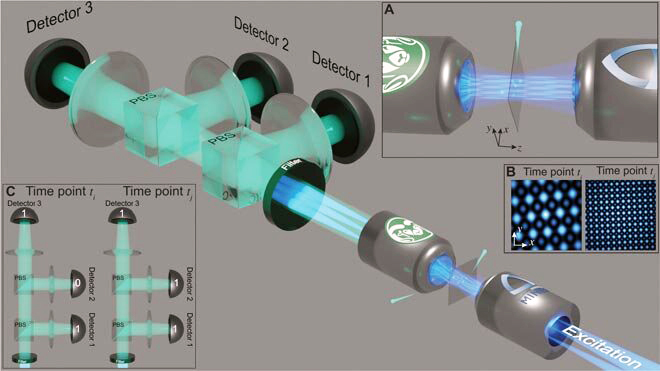
| Conceptual rendering of the experiment showing a spatiotemporally modulated optical illumination by a sparse set of mutually coherent beams. Beam interference produces the spatially structured illumination as illustrated in the main figure and insets (A) and (B). A large focal volume is achieved because each beam encompasses a small region of spatial frequency support in the pupil plane. The center spatial frequency of the beams scans across the pupil, cycling through a set of complex illumination patterns with spatial frequency structure the samples the full numerical aperture (NA) of the illumination objective lens throughout the full temporal modulation cycle. The figure shows an unfolded microscope; however, epi detection is possible. Detection efficiency could be improved by combining photon coincidence counts in multiple directions. (A) A zoomed-in example of the structured illumination light intensity at 1 time sample. The specimen is placed in the region of the slide. (B) The spatial structure of the illumination intensity in the plane of the slide for 2 time points. (C) Examples of generalized HBT detection showing cases of 2 and 3 simultaneous photon detection events. Credit: Intelligent Computing (2022). |
| © 2025 SPIE Europe |
|